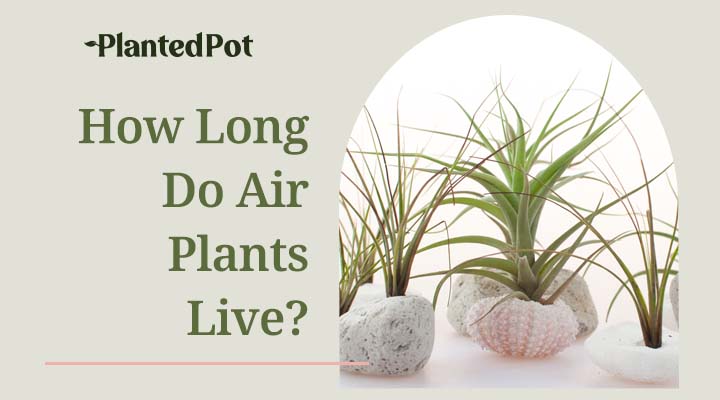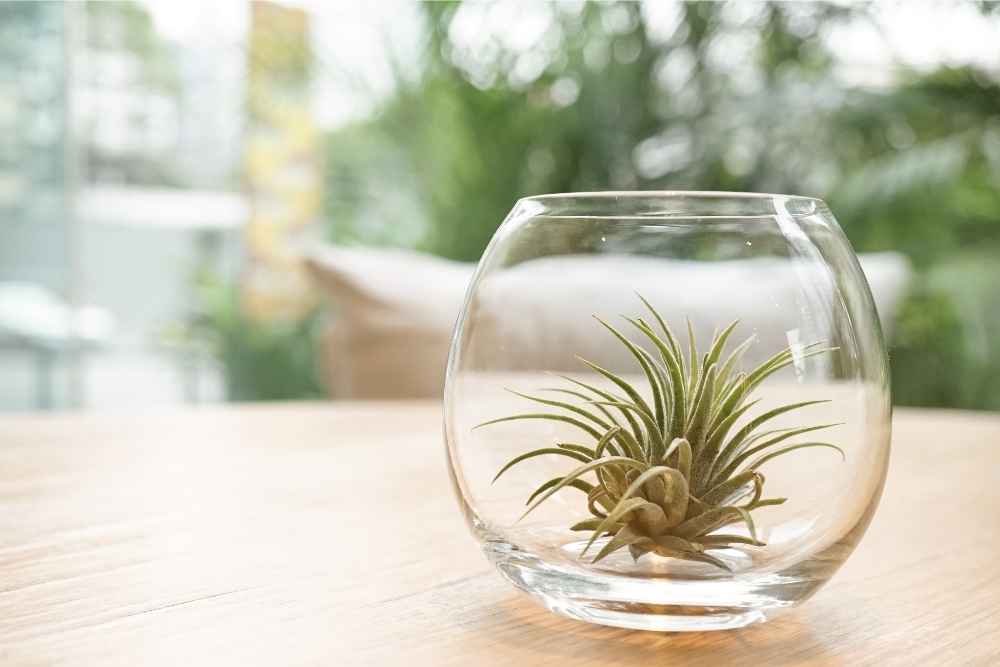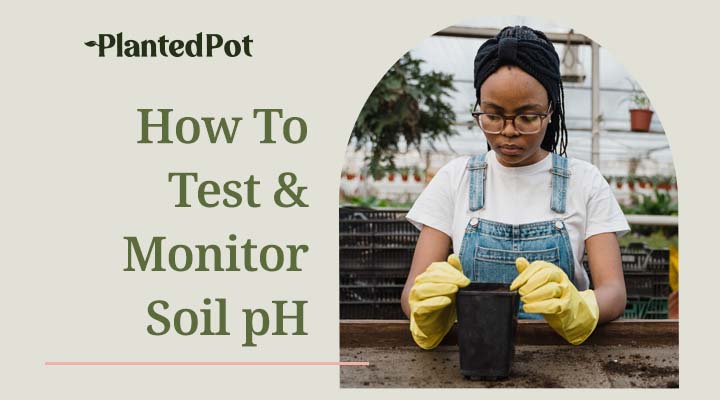
Air Plant Lifespan [Great Ways to Increase Their Lifespan!]
Home / Air Plant Lifespan [Great Ways to Increase Their Lifespan!]

Air Plant Lifespan [Great Ways to Increase Their Lifespan!]
- plantedpot
- October 1, 2021
- 1:56 pm
- No Comments
Air plants are a fantastic choice for those who want to beautify their home without the hassle. They are easy to care for and don’t require pots or soil. The air plant lifespan is generally long, making them a great investment.
It’s a mistake to believe that an air plant will thrive all by itself, though. You’ll need to tend to a few basic needs, like water and sunlight, but these are simple to do. Let’s take a deeper dive into the world of air plants!
What is the Average Air Plant Lifespan?
Most air plants can live for 2-8 years, so be prepared for a long-term relationship. Depending on the species, climate, and care it receives, an air plant’s lifespan can vary dramatically. Air plants will only survive for a few months if they aren’t cared for properly.
What Factors Impact an Air Plant’s Lifespan?
Before you fill your home with these beautiful green companions, you need to understand that different air plants have their own unique needs, and there are no universal solutions for extending an air plant’s lifespan. A variety of factors determines each air plant’s needs.
Air Plant Type
Different types of air plants are accustomed to different climates, which will affect how long they can live in your home. Broadly speaking, there are two kinds of air plants:
- Mesic Air Plants: Mesic air plant species are native to humid environments. Mesic air plants have shiny or waxy-looking leaves and need frequent watering to simulate their natural habitat.
- Xeric Air Plants: Xeric air plant species are native to hot and dry environments. You can spot a xeric air plant by its leaves, which appear fuzzy because of their large trichomes. Since xeric air plants are accustomed to more extreme environments, they are heartier than their mesic counterparts and more forgiving for first-time owners. However, xeric air plants tend to grow at a slower pace.
How It’s Propagated
There are two different ways to propagate air plants:
- From Seeds: Most air plants produce seeds after the flowering stage is over. Growing air plants from seeds is a long and tedious process. Seeds need to be kept moist, but excess water can cause fungus to grow.
- From Pups: Before they die, air plants produce pups, which are like baby air plants. You’ll typically find pups attached to the base of the plant. Once the pups have grown to approximately 1/3 the size of their mother plant, you can snip them off and start their own growth cycle. Alternatively, you can leave the pups attached, and they’ll all grow together as a clump. An air plant clump will survive long after the mother plant has died.
Starting from seeds, an air plant can take 4-8 years to mature and reach the flowering stage. On the other hand, Air plant pups typically reach maturity in 2-3 years, sometimes even quicker. Because of the speedy results and ease of care, most gardeners prefer to start with pups, but air plants grown from seeds tend to be healthier in the long run.
How the Air Plant is Cared For
A big part of air plants’ appeal is how simple they are to care for, but you can’t expect them to thrive all by themself. Water and sunlight are the most important factors in an air plant’s health. The proper amount of each varies depending on the species of air plant and your home’s climate.
Nutrients & Fertilization
In their natural habitat, air plants receive nutrients from rainwater. Since tap water doesn’t have most of these nutrients, it’s wise to treat your air plant with fertilizer. Fertilizing your air plants once a month helps them stay healthy and beautiful for as long as possible.
Air plants are members of the bromeliad family, so they do best with a bromeliad fertilizer. That said, you can use any kind of fertilizer, as long as it does not have any copper or zinc since these are toxic to air plants. If you choose a fertilizer not specific to bromeliads, you’ll need to dilute it to a quarter strength before using it on your air plants.

How Do You Increase the Lifespan of an Air Plant?
By tending to a few basic needs, you can ensure that your air plants live long and prosperous lives.
Water
To water an air plant, soak it upside-down in a bowl or the sink for one hour. Generally speaking, you should water your air plant once a week, but this depends on the humidity in your home. If the air in your home is very dry, you should increase soaking sessions to twice a week. If you live in a very humid area, you can water your air plant every two weeks.
You should stop soaking your air plant during the blooming stage since this can kill the flowers prematurely. Instead, use a spray bottle to lightly mist the air plant once a day.
Don’t use distilled water to water air plants or any other plant for that matter. Distilled water has been treated to remove many of the minerals that plants need to thrive. Use tap water for your air plants, and for the best results, let the water sit overnight so the chlorine dissipates before soaking your plants.
Light
While sun is essential for air plants, prolonged exposure to direct sunlight can be harmful. Keep your air plants in a room with indirect sunlight. If it receives too much direct sun, you’ll need to water it more often. If your home gets very little sun, you can use indoor lighting to provide the bright light that air plants need.
Temperature and Humidity
Air plants are native to the tropics, so they need to be kept in a warm environment. Keeping your air plants at temperatures below 50°F can lead to plant death. Different air plant species are accustomed to various humidity levels, so research the origin of your particular air plant. If it comes from a very humid environment, you should water it more frequently.
Pruning
An air plant’s leaves can shrivel up and turn brown with age, especially around the base of the plant. Pluck away these withered leaves to keep the plant looking fresh and healthy. If you notice that your plant’s leaves are drying at the tip or around the edges, you can gently trim the dry portion off with scissors or garden shears.
Related: Pruning Plants: The Best Guide for the Healthiest Plants!
Air Circulation
Terrariums are a popular way to display air plants, but glass enclosures limit the amount of air that can circulate around the plant. This can create wet and stagnant conditions conducive to mold. If you have your heart set on a glass display for your air plant, choose one with a large opening, like a fishbowl, so that air can surround the entire plant.
No Soil
People love the fact that air plants don’t need pots or soil, but this isn’t just for their owner’s convenience. Air plants cannot live in soil because their roots cannot absorb nutrients. They only take nutrients through their leaves.
Air plants do have thin, stringy roots, but these only exist to grip surfaces. Air plants are natural epiphytes, which means they live on the bark of trees and bushes. However, this is not essential and doesn’t impact the air plant’s lifespan.
What is the Average Air Plant Bloom Lifespan?
Air plants bloom only once during their life cycle. It can take years for an air plant to reach this stage of life, but the intensely colorful flowers are well worth the wait. Air plant blooms may last for just a few weeks, but some flowers last a whole year. Generally speaking, the flowers of larger air plants have longer lifespans.
Do Air Plants Die After They Bloom?
Blooming represents the peak of an air plant’s growth cycle. When the flowers start to wilt, it means the air plant is reaching the end of its life cycle. The plant will eventually die out completely, but with the end comes a new beginning. The pups produced by a dying air plant represent a rebirth of sorts.
Where Can I Find Air Plants?
You can find air plants right here at Planted Pot! Tillandsia Velutina is an especially good choice for first-time plant owners. It’s a hearty xeric species that rewards you with a brilliant red bloom. Check out all of our air plant species and plant related information to find the perfect compliments for your home.
Final Thoughts – Air Plant Lifespan
Air plants are the perfect solution for plant lovers with busy schedules, and since they don’t require soil, they’ll keep your home tidy as well. You’ll still need to tend to a few basic needs – water, light, and nutrients – but with proper plant care, your air plant should live a long and luscious life. You can find beautiful air plants here at Planted Pot, as well as a variety of houseplants to suit all tastes.



